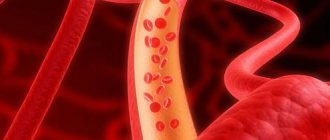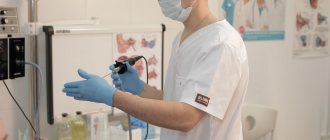Inflammation of the lymph nodes is most often a consequence of infection entering the body. In most cases, this symptom indicates the presence of pathology of certain organs. Inflammation of the lymph nodes in the neck, a symptom of which is their noticeable enlargement, is characterized by painful sensations in the affected area. The main purpose of this reaction is to prevent the spread of infection throughout the body.
In medical practice, this inflammation is called lymphadenitis. In the absence of timely, qualified treatment, it can develop into a separate disease. Subsequently, it leads to serious complications that pose a great danger to human life.
Symptoms of enlarged lymph nodes in the neck
The earlier inflammation is detected, the greater the chance that it will not develop into pathology. To do this, the patient needs to monitor his well-being with special care, noting the slightest changes in his condition. The main symptoms of enlarged lymph nodes in the neck are considered to be:
- painful sensation at their location;
- the appearance of redness or swelling on the skin;
- fever, chills, fever;
- weakness, lethargy and drowsiness;
- restriction of movements when turning or tilting the head;
- difficulty breathing, difficulty swallowing food.
In most cases, the manifestation of external signs of the disease is associated with infection directly in the lymph nodes in the neck. Inflammation, the symptoms of which are caused by exposure to microorganisms, disappears after the source of infection is eliminated. As a rule, treatment is carried out with antibiotics. Cases when the lymph node becomes inflamed on only one side are much more dangerous. This may be a sign of the onset of cancer development. In this case, not only the node itself is affected, but also other areas located next to it.
What to do if your lymph nodes hurt?
Treatment of lymph nodes depends entirely on the causes of inflammation. In order not to “overlook” the disease, it is enough to be attentive during a visual examination. With inflammation, the lymph nodes enlarge - the familiar, for example, submandibular relief becomes smoother. There are about a hundred diseases associated with this condition, so self-diagnosis is a bad idea. A much better decision would be to contact a therapist: he will be able to conduct a comprehensive examination, after which he will refer you to a specialist, depending on the nature of the inflammation.
Characteristic symptoms of the course of inflammation are also a change in the consistency of the lymph node (it can become soft from suppuration, or hard due to the development of cancer cells of the lymph tissue), the occurrence of painful sensations during palpation or swallowing, redness of the skin at the site of the lesion, as well as apathy and fatigue characteristic of many diseases , headaches and fever, which is inevitable during inflammation.
If the lymph nodes in the neck hurt from a sore throat or any other disease in which such sensations are only a symptom, then the pain will go away along with the end of the underlying disease. Mild symptoms (mild pain or tingling when swallowing or pressing, general weakness and frequent colds) indicate a general deterioration of the immune system.
In the second case, the most common treatment method is ultra-high frequency therapy - a painless and discomfort-free procedure performed using special equipment. Antibiotics and anti-inflammatory drugs can be prescribed by a doctor in case of urgent need, but in general it is enough to adhere to bed rest, take vitamins and drink plenty of warm fluids. Echinacea tincture will help ease the course of the disease - a truly magical plant, a natural antiseptic that eliminates inflammation and strengthens the immune system. Decoctions of mint, chamomile or calendula will help you feel better, and rinsing with salt and soda will help fight inflammation.
Remember that inflamed lymph nodes should under no circumstances be heated, rubbed, or an iodine mesh applied to this area. Such procedures aggravate the course of the disease and accelerate the spread of infection.
Causes of inflammation of the cervical lymph nodes
There are many factors that can trigger the appearance of inflammation in the body. There are several groups of lymph nodes in the neck area: superficial and deep. The action of the former is aimed at protecting the external integument, while the latter prevents the penetration of infection into the internal organs. Bacterial or viral infection of the pharynx, larynx, trachea, upper esophagus, as well as the oral cavity, nose and ear are the most common causes of inflammation of the cervical lymph nodes.
They can call him:
What diseases can provoke pathology?
Pathological inflammatory enlargement of the lymph nodes in the groin - regional or inguinal lymphadenitis - indicates a progressive disease of the organs from which lymph collects in the nodes, causing their enlargement.
- The lower lymph nodes collect material from the lower extremities.
- The upper lymph nodes in the groin are responsible for “cleanliness” in the area of the side of the torso, lower abdomen, and buttocks.
- The middle lymph nodes collect lymph from the duodenum and anus.
An increase in the “bag” in the groin indicates either an inflammatory process in the organs being served, or an infection in adjacent areas.
In most cases, the cause of enlarged inguinal lymph nodes is:
- bacterial / viral infection of the reproductive organs (syphilis, infectious granuloma, chancroid, gonorrhea, herpes in the groin, toxoplasmosis, tuberculosis, furunculosis);
- physical overload, swelling of the legs;
- in 92% of cases, enlargement of the groin lymph nodes accompanies injury to the genitals and perineum;
- neoplasms (including malignant ones - lymphosarcoma or lymphoma) also lead to inflammation of the lymph nodes in the groin area.
In the practice of diagnosing lymphadenitis, approximately a third of cases occur due to drug withdrawal reactions. Enlarged lymph nodes can be caused by the introduction/withdrawal of steroids and the end of the chemotherapy program.
Prevention of inflammatory processes
Lymphadenitis, as noted above, is a secondary disease. Therefore, in order to avoid colds and viral diseases, we recommend strengthening your immune system, eating well, exercising and giving up bad habits. We advise parents of children to promptly treat abrasions on the arms and legs with antiseptics, and if necessary, consult a pediatrician. By the way, the latter will tell you which doctor treats inflammation of the parotid lymph nodes, which is quite common in childhood.
If you still have questions after reading the article, please contact our medical center. You can make an appointment at any time convenient for you. Our specialists will advise and, if necessary, recommend one or another examination. You will also receive an answer to the question “what to do if the lymph nodes in the jaw are inflamed.” Contact us – the center is open 24 hours a day, seven days a week.
Related services: Consultation with a pediatrician Consultation with a family doctor
Clinical manifestations of the disease
Purulent lymphadenitis. The disease is accompanied by severe, sometimes throbbing pain and immobility of the lymph nodes. When purulent melting occurs, the skin around the lymph node becomes noticeably red. The tumor formed in this area has clear contours, but different densities. When pressing on it, a characteristic crunch is heard. The patient's condition with purulent lymphadenitis is of moderate severity (headache, weakness, rapid heartbeat, low-grade fever). If treated incorrectly, inflammation can spread throughout the body. Particular attention should be paid to inflammation of the lymph nodes in the groin in women and men.
Non-purulent lymphadenitis is characterized by enlarged lymph nodes. At the same time, they are mobile and slightly compacted. The patient's condition is satisfactory.
Classification of the disease:
- according to the course of the disease (acute and chronic lymphadenitis);
- according to the type of fluid that appears at the site of inflammation (serous, purulent, fibrous and hemorrhagic).
Acute lymphadenitis lasts about two weeks, chronic – more than a month. Inflammation of the cervical lymph nodes in adults can be both acute and chronic.
Therapy for regional lymphadenitis
The danger of regional enlargement of nodes is in the absence of obvious pain in the groin. In 80% of cases, there is an enlargement of the lymph nodes without pain. This complicates diagnosis and leads to unintentional delayed treatment. While early detection of diseases that provoke lymphadenitis in the groin significantly increases the chances of treatment without complications.
Enlarged lymph nodes in the groin are treated only comprehensively. Initially, it is necessary to determine the source of the problem - the area of localization of inflammation. Without this (getting rid of the primary disease), treatment of the lymph nodes in the groin will be accompanied by relapses.
Much depends on the degree of increase and form of infection. For non-purulent forms of diseases in the groin, pharmacological therapy (antibiotic ointments/gels or oral administration) in combination with restriction of mobility may be sufficient. If suppuration begins against the background of enlarged lymph nodes, a surgical procedure may be required - opening and cleaning the lesions in the groin.
In some cases, medication and physical therapy for enlarged inguinal lymph nodes may be accompanied by the use of herbal-based drugs (dandelion, peppermint, herbs) in order to enhance the sedative effect in the inguinal lymph nodes.
Diagnostics
Visual examination of the patient and history taking are important. After this, the doctor prescribes a detailed blood test and x-ray or computed tomography. This is done to exclude tumor diseases. In severe cases, a lymph node biopsy is prescribed.
To identify the causes of inflammation of the inguinal lymph nodes, the doctor will recommend a general urine test, as well as testing for syphilis, hepatitis and HIV infection.
On our website you will find information regarding the diagnosis and treatment of lymphadenitis. In addition, you have the opportunity to schedule a consultation with a specialist and learn how to treat inflammation of the lymph nodes behind the ear.
Enlarged lymph nodes - what to do
Inflammation of the lymph nodes, called lymphadenitis, and often found in combination with lymphagnoitis, is an alarming symptom. If the lymph nodes become enlarged and painful, you should consult a doctor to determine the cause of this deviation. In most cases, enlarged lymph nodes signal the development of some disease that requires diagnosis and treatment. Typically, enlarged lymph nodes are caused by an inflammatory process occurring in the human body.
Causes of inflammation of the lymph nodes
Inflammation of the lymph nodes is a natural, objective process, because the lymph nodes filter all components that enter the circulatory system. As soon as pathogenic microorganisms enter the lymph node, which is a kind of barrier, lymphocytes begin to work in it, killing harmful viruses and bacteria. But in some cases, the mass of foreign elements in the blood increases so much that the normal number of white blood cells can no longer cope with their function. In response, lymphocytes actively multiply to eliminate the infection. And now the lymph nodes grow, become inflamed, redness of the skin and pain appear - inflammation of the lymph nodes is diagnosed.
Signs of inflammation of the lymph nodes
Inflammation of the lymph nodes is accompanied by the following symptoms:
- swollen lymph nodes;
- pain in the lymph nodes;
- general malaise, headache;
- heat.
If, in addition to the listed signs, the skin in the area of the lymph node turns red and severe pain appears, it means that a purulent process has begun. Other signs of purulent inflammation of the lymph nodes are fever, chills, and a general deterioration in the patient’s condition.
If an enlarged lymph node does not hurt, the temperature does not rise and the node grows slightly in size, this signals that this lymph node is functioning more actively than the others. This can be caused by some disease that occurs at the time of inflammation of the lymph node, or has already passed. After some time, the enlarged lymph node takes on its standard size.
There is local and generalized inflammation of the lymph nodes - this depends on the degree of spread of the disease. If only one category of lymph nodes is affected, they speak of local inflammation of the lymph nodes. If lymph nodes that are not adjacent to each other swell and hurt, this is a generalized inflammation of the lymph nodes.
Diseases that cause enlarged lymph nodes
As a rule, enlarged lymph nodes are associated with an infection - affecting the entire body or local. The onset of many serious diseases, including infectious and even cancer, is indicated by enlarged lymph nodes (one or more).
Inflammation of the lymph nodes is a symptom of a variety of ailments - from banal acute respiratory infections or tonsillitis to such serious cancers as leukemia or lymphoma.
By the way, in childhood, inflammation of the lymph nodes is observed much more often than in adults.
Often in babies, the lymph nodes located at the base of the skull or in the neck protrude greatly above the surface of the skin, and this is normal. Despite the fact that at first glance, such lymph nodes seem painfully swollen, they do not indicate any abnormality, but are simply an individual characteristic of this child. However, if the enlargement of the lymph nodes is pronounced, and their diameter is more than two and a half centimeters, this is already a sign of the disease.
Acute inflammation of the lymph nodes
The onset of acute inflammation of the lymph nodes is indicated by painful sensations, enlarged lymph nodes, elevated temperature, and lethargy. In many cases, inflammation of the lymph nodes is accompanied by an inflammatory process in the lymphatic vessels. As a rule, inflammation of the lymph nodes is more severe, the more pronounced the infection that caused it. However, it also happens that the initial infectious process has already subsided, and the lymph nodes still hurt and remain swollen.
Acute inflammation of the lymph nodes can have three forms: catarrhal (non-purulent), hemorrhagic (blood admixture appears in the lesion) and purulent. Catarrhal inflammation of the lymph nodes is rarely accompanied by a deterioration in the general condition; the lymph nodes located at the site of the original source of inflammation are painful and swollen, the skin does not turn red, and the tissues adjacent to the lymph node are not affected by infection.
With purulent inflammation, the lymph nodes hurt much more severely, the skin in the lesion becomes red and inflamed, the lymph nodes become immobile, general symptoms of the infectious process appear (weakness, lethargy, elevated body temperature, headache, etc.)
If the patient consulted a doctor on time and the inflammation of the lymph nodes was correctly diagnosed, the treatment will be effective and uncomplicated. But if the disease starts and it goes into a purulent stage, it is quite possible that the lymph node will be completely destroyed and a patch of connective tissue will form in its place. In this case, the outflow of lymph in this area will be disrupted, and permanent swelling will appear. Other serious complications of lymphadenitis are an inflammatory process in the veins (thrombophlebitis), purulent inflammation of adjacent tissues, and blood poisoning. In addition, acute inflammation of the lymph nodes often develops into a chronic form.
Chronic inflammation of the lymph nodes
The chronic form of inflammation of the lymph nodes can begin in the process of a sluggish chronic infectious disease (for example, chronic tonsillitis). Another possibility is the transition of the acute phase of inflammation to the chronic phase. As a rule, with a chronic course, the lymph nodes enlarge, but do not suppurate. When palpating chronically inflamed lymph nodes, the doctor discovers that they are fused with adjacent tissues and compacted. In this case, the lymph nodes do not hurt, but remain enlarged for a long time. Gradually, the tissue of the lymph nodes is replaced by connective tissue, and they decrease in size. Sometimes overgrown connective tissue causes disruption of lymph circulation - swelling appears.
Doctors identify six groups of causes that cause enlarged lymph nodes. These are the following diseases and conditions:
- local infection;
- general infection (generalized, widespread), affecting the body as a whole;
- connective tissue diseases;
- oncological diseases;
- increased sensitivity of the body;
- granulomatosis.
1. Localized infections can be bacterial and viral, as well as caused by other microorganisms.
— Bacterial local infections. If lymph node enlargement occurs once, it can be caused by staphylococcus or streptococcus. There are, of course, other, more severe bacterial infections - for example, plague or diphtheria. Long-term chronic local infections also include tuberculosis.
— Viral local infections causing inflammation of the lymph nodes. These include, say, rubella, cat scratch disease (Bartonella) - the most common infections that provoke inflammation of the lymph nodes.
In addition to viruses and bacteria, enlargement of lymph nodes can also be caused by other pathogens - protozoa, fungi, spirochetes.
After vaccination against a group of diseases (DTP), children's lymph nodes often become inflamed and painful, but this process is temporary and passes quickly.
2. Common (generalized) infections are also caused by bacteria, viruses and other microorganisms.
— general bacterial infections that cause inflammation of the lymph nodes include tuberculosis, typhus, and some contagious skin diseases.
— viral infections accompanied by enlarged lymph nodes include, for example, the following:
- cytomegalovirus,
- rubella,
- chickenpox,
- Infectious mononucleosis.
According to some scientific data, AIDS may also be one of the causes of inflammation of the lymph nodes.
— Among other causative agents of generalized infections are spirochetes, single-celled microorganisms that can cause enlargement and pain in the lymph nodes.
During an infectious process that affects the entire human body, inflammation of the lymph nodes first occurs in one of them, and then spreads to several lymph nodes, and then they speak of generalized inflammation.
3. Connective tissue diseases that can cause enlargement of lymph nodes are, for example, arthritis, systemic lupus erythematosus.
4. Hypersensitivity states occur in some people who react strongly to certain substances. Inflammation of the lymph nodes is an individual response to the administration of therapeutic drugs and other media. An example is horse serum, which is used to make antiserum and can cause swollen lymph nodes in hypersensitive patients.
5. Oncological diseases also cause enlargement of lymph nodes. Among them, for example, leukemia, lymphogranulomatosis, lymphoma.
6. Granulomatosis.
If you discover enlarged lymph nodes in yourself or someone close to you, you should contact one of the following specialists:
- infectious disease physician,
- surgeon,
- hematologist,
- oncologist.
Take care of yourself and your loved ones!
T.A. Konon.









